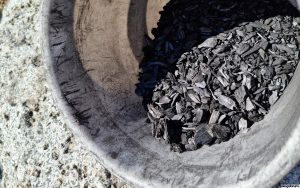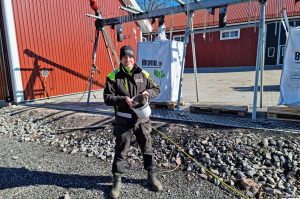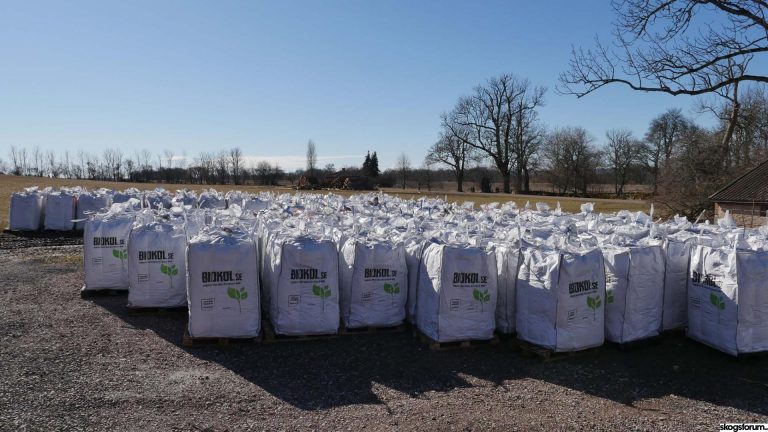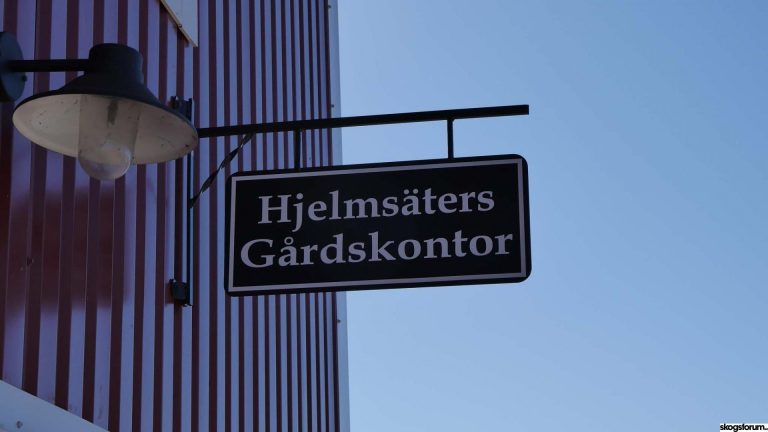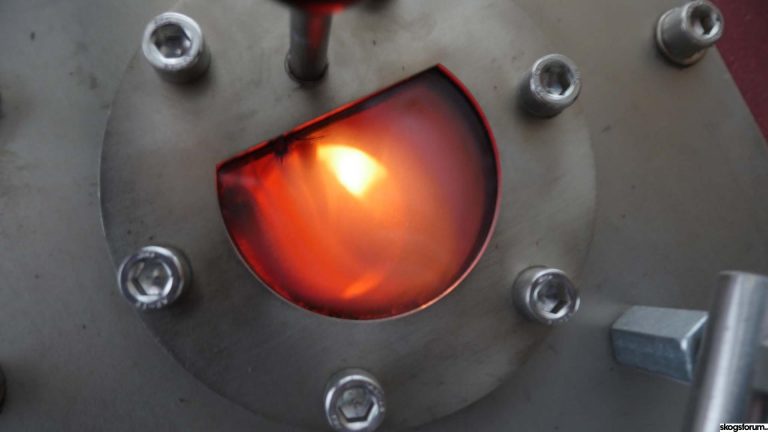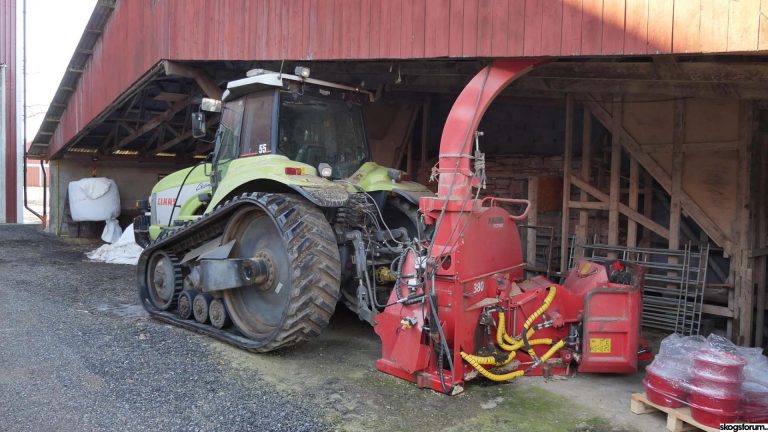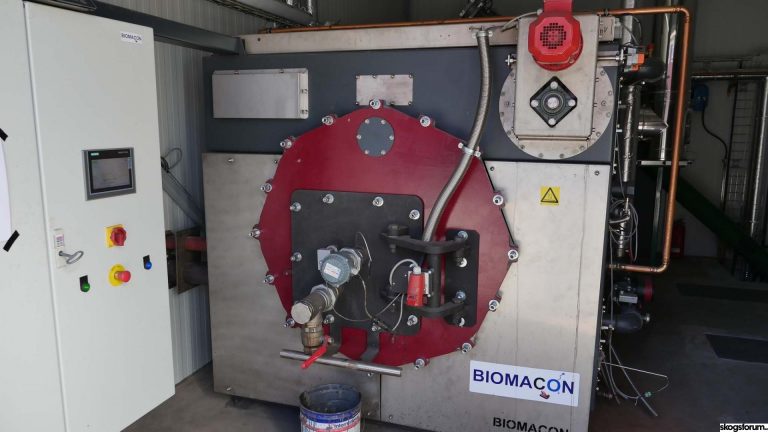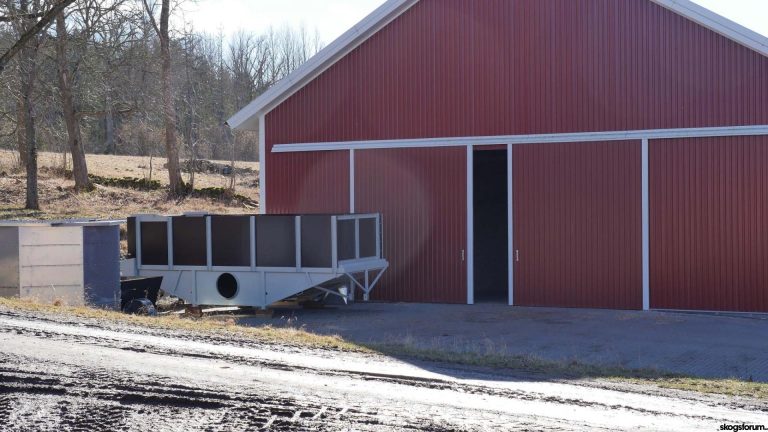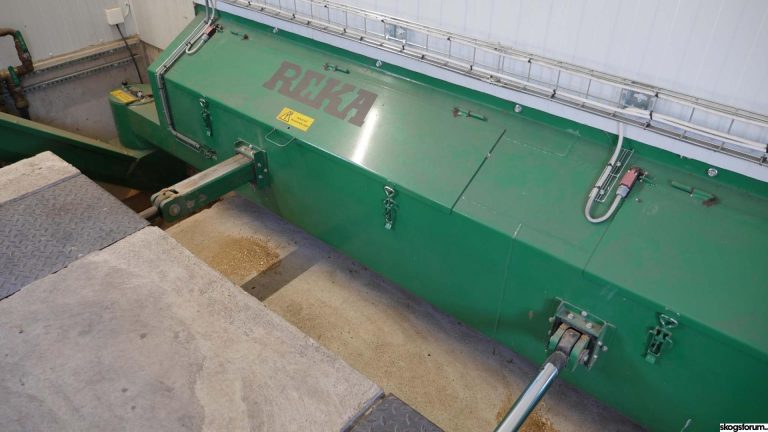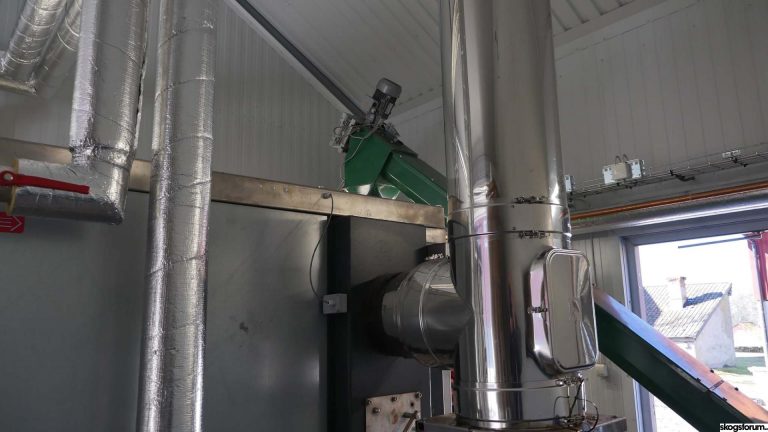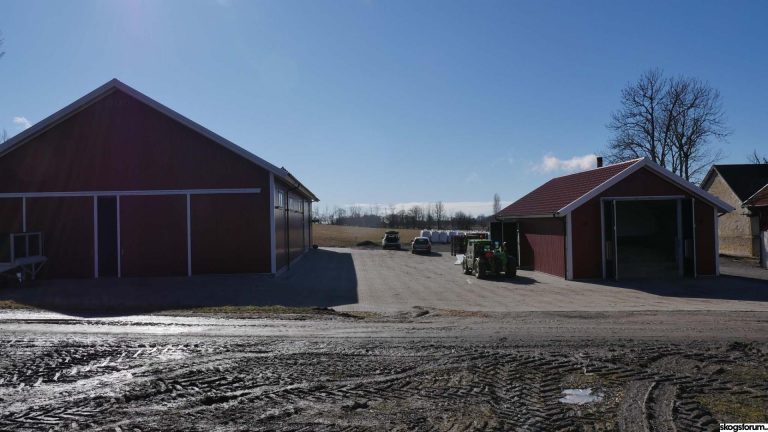There has to be better ways than just burning the chips to heat the house? was the question that Edvard Hamilton asked himself when he was standing by his chip boiler at the farm seven years ago. Now he knows there are better ways. Biochar production, where the process itself heats the whole farm and some more. Fredrik at the sister site Skogsforum.se visited an exciting and diverse entrepreneur.
A biochar production farm
Since the early 18th century, the Hamilton family has owned and run the Hjelmsäter Estate. Edvard Hamilton is the present manager. He explains that the philosophy to manage the estate for coming generations is strong, and that´s obvious. It´s a beautiful farm with ancestry and buildings from over 500 years ago. In addition to that, the view over Lake Vänern is astonishing and everything at the farm is in very good order.
To be first and prepare the road
Hjelmsäter was one of the first companies to start a production of biochar in Sweden. Production of charcoal through pyrolysis has been around since the medieval times. But here we are talking about modern production, also through pyrolysis, that has been talked about for over 10 years. Now, it seems that a breakthrough is close, thanks to boilers that optimizes the process with computer power, and equipment that make the handling easier.
To be the first could be a challenge, and so it was partly also for Hjelmsäter’s. Who are the customers and how do we find them? What tree species gives the best result? What fractions should it be? Can it self-ignite and what happens then?
Another question that pops up is: How could they go for such a big investment at the time?
Poor soil and Kinder eggs
The natives in the Amazonas taught us that if you plough enough coal into the soil, what´s on the soil will grow better. This is due to the ability of coal to suck in water and nutrients that are important for the flora to grow.
The soil at Hjelmsäter Estate is so thin that it´s difficult to get a plough in the ground. If you are the owner of such soil, have read about the natives in the Amazonas and also need to heat up your house, you may come to the conclusion that to invest in a biochar plant could be a good idea. You can heat the house and plough down biochar in the fields to get better harvest. Exactly this, Edvard has done on some of the land he is managing for the coming generations.
He didn´t have to wait for the result. After the extremely dry summer in 2018 the harvest from the biochar prepared fields was as in a normal year. The other fields gave very poor harvest, to say the least.
More and more people have realized the benefits of biochar, so nowadays Edvard sells biochar to others. But wait a minute! Referring to Kinder Eggs there should be three wishes to fulfill. We forgot one thing: The carbon storage.
Climate smart for real
The trees that you use as firewood stores carbon as the tree through the photosynthesis turns carbon dioxide into carbon as it grows. When you burn the wood the normal way, you let all the stored carbon out in the atmosphere. The good thing about pyrolysis is that you still get the heat (but less than by normal burning) and most of the carbon from the tree transforms into pure carbon. If you dig or plough the carbon into the ground it will slowly degrade. For the species in the northern hemisphere, it will take 1000 – 3000 years until the degradation is complete.
This is in other words a smart way of storing carbon dioxide. So smart that you can get paid for it. You heat up your house, you get better harvest from your fields and the better growth on the fields binds even more carbon dioxide from the atmosphere.
Commodity exchange for carbon storage
We have written here at NordicWoodJournal.com about that you can get paid for storing carbon in your standing forest. But you can also get paid for ploughing the carbon into the ground. Hjelmsäters have recently joined puro.earth, something you can call a commodity exchange for carbon where you can sell your carbon storage.
Edvard Hamilton believes in this idea and has already received requests to sell his carbon storage. He thinks it will be even better when similar Swedish commodity exchanges starts to grow. Puro.earth is Finnish and run by Fortum.
The phenomenon carbon commodity exchanges are quite new and have received lots of negative criticism. There are most likely solutions in this business that are a bit “shady” and deserve it, which is typical for a new market. But in a long-term perspective this is something that will come, can´t be stopped, and will become a growing market.
Edvard have joined this ride and is positive, as long as governments and the EU keeps their hands off. He believes that the market has to manage these systems themselves, without complicated bureaucracy from the authorities.
What about the costs?
This is no normal boiler for woodchips or firewood. These systems are more complex and there is no obvious correlation between the size and the price. So, if you decide to go for it – you might as well go big.
Hjelmsäter’s boiler is a German Biomacon. It gives 160 kW and “chews” 6 cubic meters (cbm) spruce chips per day. This gives a production of 1,5 cbm biochar per day, one so called “bigsack” (see photos below). This size of boiler incl. installation and boiler house costs like a big forwarder.
If it runs 24-7 (which it should) you get an average production of 45 metric tons biochar per month. The price of biochar differs depending on where you are and if you are certified, so you will have to calculate that yourselves. The profit is also depending on the price of the raw material you use. 2 cbm solid wood or 4 cbm chips gives 1 cbm biochar.
In any case, you will get your house, and more, heated in the price.
What´s the backside of the coin?
There are a few things to bear in mind. First of all, you will need a customer base. There are customers among gardeners in different sizes but mainly among the municipalities. The market for biochar is still young meaning there are very few dealers of the product. If you compare with a normal chips or firewood boiler, a biochar boiler is more demanding for the owner as it is more complicated.
The biochar has to be stored outdoors for approx. a month. This is because if partly unburned chips are in the sacks, it can self-ignite. Irrigation and surveillance on a pallet outdoor are the cure for this.
If you want maximum production all year around, you have to find a way to get rid of the heat during the summer. Edvard Hamilton’s solution to this is that “the children have to learn how to swim” – a swimming pool.
Many potential customers will demand that you are certified. To avoid missing potential customers, it´s a good idea to do certify your business. It will cost you some money and some time but on the other hand you can charge more for your product when you are certified.
The future for biochar
It seems that the future for biochar is bright. It has a combination of so many positive effects both out of micro and macro perspectives. You get heat without letting the majority of the carbon dioxide out and you can use the product, the carbon, as carbon storage and fertilizer at the same time.
The question is why the large heating plants and sawmills doesn´t do this today? It should have been a smart idea as they produce heat already today. Maybe, even though it´s an ancient technique, it´s because it´s relatively new for our time. There are very few, if any, large plants that can make biochar out of wood. Let us hope that it comes. Theoretically the environmentalists’ worst enemies could become their best friends. Theoretically …
Photos: Fredrik Reuter






